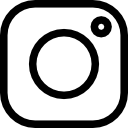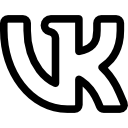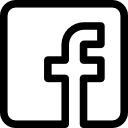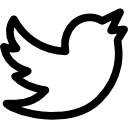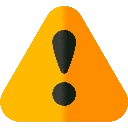ng test banks go together with the textbook that you have for your nursing class. It has relevant questions and answers for each chapter in your book. There is one test bank for each textbook, if you have this exact textbook right now and want the questions and answers that come along with it, and then this test bank is for you. The format in which you will receive this nursing test bank is a Microsoft Word or PDF download. You can open this nursing test bank download on your phone or computer. Who is this test bank for? If you are a nursing student in school and you are taking a class or course in nursing school, this test bank is for you. You could be someone who needs help and wants to learn correct answers to hard questions, or maybe even someone who just wants to learn important knowledge for nursing: this test bank is perfect for you. Where to purchase test banks? You can purchase them here on this website: . These are practice study questions, which you can use for your exam. This is a digital download; you can download it right after your purchase today. Where to purchase the textbook instead of the test bank? You can download the eBook for the textbook, if you prefer a digital textbook instead of a hardcover. Is this a legit nursing test bank? Yes, the files listed here on are legit and authentic, we guarantee the authenticity of each chapter and test bank: this means that you will received every single authentic chapter, which includes all the questions and answers for each and every chapter. How to purchase this test bank? We have made very simple, easy and fast steps for you, to purchase and download this test bank today. You can add this test bank to your shopping cart, checkout and you receive your download link automatically. There is no waiting period; the download is instantaneous with your purchase because it is a digital file. When can I download this test bank? 2/14 You will be able to download this test bank today. We want to make the process easy for nursing students, so it doesn’t matter if it’s daytime or nighttime, when you checkout, you will be provided with a download link right away so you can start studying. Free nursing test banks sample: File: chap19, Chapter 19 Multiple Choice 1. Which of the following does NOT occur as a complication of a kidney stone? 1. Renal colic caused by passage of stone from kidney into ureter 2. Kidney infection 3. Hydronephrosis caused by obstruction of urinary drainage by stone impacted in the ureter 4. Glomerulonephritis Ans: D Page: 494 2. Pyelonephritis results from which of the following? 1. Formation of immune complexes that damage the glomeruli 2. Bacterial infection of the kidney 3. Formation of autoantibodies directed against the glomerular basement membrane 4. Inadequate renal blood flow Ans: B Page: 493 3. Which of the following statements regarding acute glomerulonephritis developing after a streptococcal infection is correct? 1. It results from a bacterial infection of the glomeruli. 2. Antigen-antibody complexes are filtered from the blood and accumulate within the walls of the glomerular capillaries where they incite an acute inflammation. 3. The glomerular filtration rate is increased, leading to excess loss of fluid and electrolytes in the urine. 4. It is usually associated with coexisting streptococcal infection of the bladder (cystitis). Ans: B Page: 488 4. Which of the following statements regarding the nephrotic syndrome is correct? 3/14 1. Production of plasma proteins by the liver is impaired as a result of kidney disease. 2. Protein is lost in the urine more rapidly than it can be produced by the liver and blood protein falls, which is responsible for the edema. 3. It is usually caused by a bacterial infection of the glomeruli, which impairs glomerular filtration. 4. It is usually caused by renal tubular disease, which prevents reabsorption of protein filtered by the glomeruli. Ans: B Page: 489 5. Which of the following statements regarding congenital polycystic kidney disease is INCORRECT? 1. It is transmitted as a mendelian dominant trait. 2. Enlarging cysts within the kidneys eventually destroy kidney function. 3. The kidneys become greatly enlarged. 4. Manifestations of kidney failure usually occur in late childhood or adolescence. 5. It may be complicated by infection or bleeding in kidney cysts. Ans: D Page: 499 6. A young woman experiences frequent urination with a burning sensation. Her urine contains many white blood cells and bacteria. There is no glucose or protein in the urine. What is the most likely cause of these manifestations? 1. Congenital polycystic kidney disease 2. Urinary tract infection 3. Chronic glomerulonephritis 4. Nephrotic syndrome Ans: B Page: 493 7. Which of the following statements regarding urea is INCORRECT? 1. It is a nitrogen-containing compound formed as a byproduct of protein metabolism. 2. It is a toxic compound. 3. It is a waste product excreted by the kidney. 4. The concentration of urea in the blood is elevated in patients with renal failure. Ans: B Page: 480, 502 4/14 8. All of the following diseases may damage the kidneys EXCEPT: 1. lupus erythematosus. 2. gout. 3. diabetes mellitus. 4. infectious mononucleosis. 5. pyelonephritis. Ans: D Page: 488-489, 490-491, 493 9. The region of the kidney where the blood vessels enter and leave and where the ureter exits to descend to the bladder is called the . 1. inner medulla 2. renal pelvis 3. pyramids 4. hilus of the kidney Ans: D Page: 479 10. What is the site where the afferent arteriole enters the glomerulus and the efferent arteriole exits? 1. The Bowman’s capsule 2. The vascular pole 3. Glomerular arteriole 4. Capsular epithelium Ans: B Page: 480 11. What powerful vasoconstrictor raises the blood pressure by causing the peripheral arterioles to constrict? 1. Renin 2. Angiotensin I 3. Angiotensin II 4. Angiotensin-converting enzyme 5. Aldosterone Ans: C Page: 484 5/14 12. Which of the following is NOT a condition that must be satisfied for the nephron to function normally? 1. There must be free flow of blood through the glomerular capillaries. 2. An adequate volume of filtrate must be produced, and the filter should not restrict passage of blood cells and proteins. 3. The tubules must be able to reabsorb important substances from the filtrate to excrete other constituents into the filtrate. 4. The urine formed must be able to flow freely from the kidney into the bladder and out of the urethra. Ans: B Page: 485 13. Renal agenesis can best be described as which of the following? 1. Fusion of the two kidneys 2. Formation of extra ureters and renal pelves 3. Improper positioning of one or both kidneys 4. Failure of one or both kidneys to develop Ans: D Page: 486 14. Which of the following statements regarding nephrotic syndrome is INCORRECT? 1. The syndrome refers to a group of abnormalities characterized by an excess of protein in the urine. 2. It may be produced by a number of different types of renal diseases. 3. Patients have marked leg edema. 4. It most frequently occurs in children. Ans: A Page: 489 15. All of the following protect against cystitis and pyelonephritis EXCEPT: 1. infrequent urination. 2. large urine volume. 3. complete emptying of the bladder. 4. an acid urine. Ans: A Page: 493 6/14 16. If a patient complains of burning pain on urination and a desire to urinate frequently, this person should be checked for which of the following conditions? 1. Pyelonephritis 2. Cystitis 3. Hydronephrosis 4. Calculi Ans: A and B Page: 493 17. Which of the following statements about vesicoureteral reflux is INCORRECT? 1. This condition predisposes to urinary tract infection. 2. Bacteria may also be carried into the upper urinary tract by the reflux of urine. 3. This condition predisposes to gout. 4. Residual urine remains in the bladder. Ans: C Page: 494 18. Which of the following does not predispose to kidney stone formation? 1. Increased concentration of salts in the urine 2. Infection of the urinary tract 3. Increased concentration of protein in the urine 4. Urinary tract obstruction Ans: C Page: 494 19. Which of the following statements about polycystic kidney disease is INCORRECT? 1. It is a very common hereditary disease that affects as many as 1 in 400 persons. 2. About 85% of cases result from a mutation of PKD2. 3. Two different genes, PKD1 and PKD2, are involved. 4. The disease is characterized by disturbed proliferation of tubular epithelial cells, which leads to the formation of cysts. Ans: B Page: 499 20. A urinalysis can include all of the following EXCEPT which of the following? 1. Determinations of urine PH 7/14 2. Tests for glucose and protein 3. Tests for fecal material 4. Determinations of specific gravity 5. Tests for acetone Ans: C Page: 501 21. Approximately 50-75% of all cases of chronic renal failure result from which of the following? 1. Chronic pyelonephritis 2. Polycystic renal disease 3. Diabetes and hypertension 4. Chronic glomerulonephritis 5. Autoimmune diseases Ans: C Page: 503-504 22. Which of the following is NOT a symptom of renal failure? 1. Weakness 2. Anemia 3. Diarrhea 4. Retention of water weight 5. Increase in blood volume Ans: C Page: 504 23. Which of the following statements about hemodialysis is INCORRECT? 1. Waste products diffuse from the blood into the dialysate because of differences in blood volume on the two sides of the membrane. 2. It is usually performed in an outpatient dialysis center 3 times a week for 3-4 hours. 3. This procedure substitutes for the functions of the kidneys. 4. The dialysate flows on the other side of the membrane in a direction opposite to the blood flow. Ans: A Page: 507 24. Which of the following does NOT describe creatine clearance? 8/14 1. Higher in women 2. Measures the ability of the kidneys to clear the blood of creatinine 3. Creatinine is the breakdown product of phosphocreatine in the muscle. 4. Expressed in milliliters of blood cleared of creatinine per minute 5. Results represent the glomerular filtration rate Ans: A Page: 502 25. Which of the following does NOT characterize Wilm’s tumor? 1. It is a highly malignant tumor of primitive cells. 2. It arises in the kidneys of infants and young children. 3. It can metastasize widely. 4. It is a type of a renal cortical adenoma. 5. Treatment is by surgical resection with radiation and chemotherapy. Ans: D Page: 501 True/False 26. Almost all tumors arising from the transitional epithelium of the urinary tract are malignant. Ans: True Page: 500 27. Renal cortical adenomas are usually small and of no clinical significance. Ans: True Page: 500 28. The procedure called extracorporeal shock wave lithotripsy is a method used to eliminate kidney stones using shock waves. Ans: True Page: 495 29. Cystitis most commonly affects children. However, with corticosteroid therapy, most children can recover completely. Ans: False Page: 493 9/14 30. Patients with arteriolar nephrosclerosis have marked leg edema, and often fluid collects in the abdominal cavity and sometimes in the pleural cavities. Ans: True Page: 490 31. One of the less common ways for glomerulonephritis to develop is from an autoantibody directed against the basement membranes of the glomerular capillaries. Ans: True Page: 489 32. Immune-complex glomerulonephritis is characterized by a relatively uniform layer of antibody and complement deposited along the inner surface of the glomerular basement membranes. Ans: False Page: 489 33. The kidneys begin their development in the pelvis. As the embryo grows, the kidneys and their excretory ducts occupy a higher position, and eventually ascend to reach their final positions in the upper lumbar region. Ans: True Page: 485 34. The backflow of urine into the ureters during urination is primarily prevented by the angle of each ureter entering the bladder. Ans: True Page: 479 35. Urine is discharged into the bladder in part by gravity. Ans: False Page: 479 36. A patient who has had a kidney transplant must continue to take immunosuppressive drugs indefinitely to prevent rejection of the new kidney. Ans: True Page: 509-510 37. The ureteral openings in the bladder are partially covered by folds of mucosa to prevent 10/14 the retrograde flow of urine. Ans: True Page: 479 38. The signs and symptoms of uremia begin to appear when 50% of renal function is lost. Ans: False Page: 504 39. Peristalsis of the muscular walls of the ureters prevents discharge of urine. Ans: False Page: 479 40. Conversion of angiotensin I to angiotensin II is catalyzed by the angiotensin-converting enzyme from the renal endothelium. Ans: False Page: 485 Matching 41. Match the disease with its characteristic feature. Polycystic kidney disease Gout Pyelonephritis IgA nephropathy Diabetes 1. Kidney infection 2. Mendelian dominant trait 3. Nodular and diffuse basement membrane thickening 4. Urate crystals plug tubules 5. Immune complexes in mesangial cells Ans: B, D, A, E, C Page: 488, 490-491, Short Answer 42 Name and describe the parts that comprise the juxtaglomerular apparatus. Ans: 1. The juxtaglomerular apparatus is composed of the macula densa, a condensation of cells in the distal part of the renal tubule, where it is in contact with the vascular pole of the glomerulus. 2. The juxtaglomerular cells are specialized renin-containing smooth muscle cells located in the wall of the afferent glomerular arteriole at the vascular pole of the glomerulus. 3. A group of cells interposed between the vascular pole of the glomerulus and the macula densa. 11/14 Page: 482 43. Provide the formula for the clearance test and define its parts. Ans: Clearance UV/P, where U is the concentration of the substance excreted in milligrams per milliliter of urine; V is the volume of urine excreted, expressed in millimeters per minute; and P is the concentration of the substance in the plasma expressed in milligrams per milliliter. Page: 502 44. Name and briefly explain the three basic types of dialyzers. Ans: 1. The three basic types of dialyzers are coil dialyzers, plate dialyzers, and hollow fiber dialyzers. In a coil dialyzer, the blood flows through a tube made of synthetic, semipermeable membrane material. The tube is wrapped around a mesh screen to form a coil, and the dialysate flows around the coil. 2. In a plate dialyzer, blood flows within a synthetic, semipermeable membrane between two plates, and the dialysate flows in the opposite direction outside the membrane. 3. A hollow fiber dialyzer consists of a bundle of hollow synthetic fibers through which the blood passes. The dialysate circulates around the outside of the fibers in the opposite direction. Page: 507 45. What two mechanisms prevent the backflow of urine into the ureters? Ans: Ureters enter the bladder at an angle such that as the bladder contracts, the muscles of the bladder compress the ureters like a one-way valve. Second, the ureteral openings in the bladder are partially covered by folds of mucosa that also help prevent the retrograde flow of urine. Page: 479 46. What is the trigone of the bladder? Ans: The triangular area bounded by the urethral orifice anteriorly and by the ureteral openings posteriorly. Page: 480 47. What are the three main parts of the renal tubules and its main action? Ans: Proximal convoluted tubule: greatly coiled first part of the tubule located close to the glomerulus Loop of Henle: U-shaped segment composed of descending and ascending limbs (thin and thick segments of the loop of Henle) 12/14 Distal convoluted tubule: shorter than the proximal tubule and empties into the collecting tubule Action: selective reabsorption of water, minerals, and other substances; excretion of waste; urine formation Page: 482 48. What are the requirements for normal renal function? Ans: Free flow of blood through the glomerular capillaries Normal glomerular filter function Selective tubular reabsorption of important substances from the filtrate Free flow of urine formed by the nephron in the kidneys into the bladder and the urethra Page: 485 Essay 49. Compare and contrast immune complex glomerulonephritis versus diabetic glomerulosclerosis. Ans: Immune complex glomerulonephritis: antigen-antibody complexes are filtered from the blood and accumulate within the walls of the glomerular capillaries where they incite an acute inflammation. Injury to the tissues results from the action of complements and leukocytes; these
No review has been posted for this item yet
 Cookies!
Cookies!



